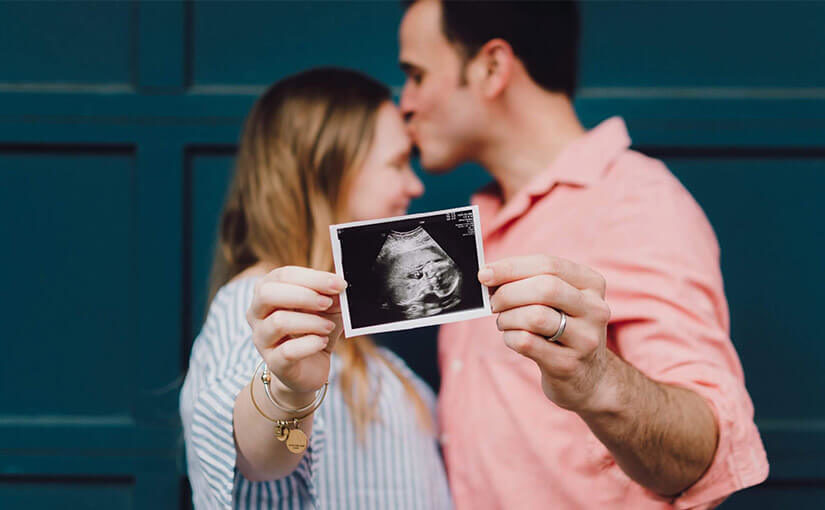Pregnancy and birth are exciting and emotional times for parents, and pathology testing is important during a pregnancy, together with scans, to check how the baby is developing and to monitor the health of the mother.
Placental pathology is an important specialist area that helps provide doctors with more information if it is suspected during pregnancy that there is a problem with the placenta, or when there are adverse outcomes for a baby or mother before, during and after labour.
The placenta is the lifeline between mother and baby. The first indications of a problem with the placenta may be if a baby is growing more slowly than expected, or if an issue with blood-flow through the placenta is found during an ultrasound scan.
While placental sampling (known as chorionic villus sampling [CVS]) can be performed in the first trimester to detect specific abnormalities in an unborn baby, most placental pathology examination is performed when a baby has been delivered or if a pregnancy has ended.
Conditions affecting the placenta are very important, they can lead to outcomes ranging from recurrent miscarriage, restricted growth of a baby, preterm birth or even death of a baby. It is thus important the placenta is examined, to help give answers to the family and their treating doctor or midwife in these situations.
One condition that may lead to the baby’s growth being restricted and, in some cases, other developmental problems or even stillbirth is chronic villitis. It is a condition that causes an inappropriate immune response in the mother which damages the placenta by attacking blood vessels in the villi. This condition affects 5-15% of pregnancies and has a recurrence risk in the next pregnancy of around 17%.
If it is suspected that chronic villitis is affecting a pregnancy some treatments can be provided, and doctors may also decide it is safer to deliver the baby earlier than 40 weeks. The diagnosis of chronic villitis can be confirmed once a pathologist has examined the placenta after birth.
Chronic intervillositis is a less common condition, only affecting around 1% of pregnancies. The consequences can be severe with 41% of cases resulting in stillbirth. The recurrence rate is 30-100% in future pregnancies.
Both these conditions are likely to be more severe if they do recur in a future pregnancy, making it even more essential that diagnosis is confirmed by examination of the placenta and parents are informed.
There are a number of risk factors for placenta problems including the mother having pre-eclampsia, diabetes, Systemic Lupus Erythematosus (SLE), and pregnancies conceived via IVF, or with multiple gestations (e.g. twins).
Professor Jane Dahlstrom is Executive Director of ACT Pathology, and an anatomical pathologist who specialises in perinatal pathology and conducts research on placental pathology. She said;
“When I examine a placenta, I don’t think of it as being an academic exercise. I think from the point of view of the family, and in terms of the next pregnancy. These alloimmune conditions where the mother’s immune system is thought to attack the placenta are associated with small babies and stillbirth, so it’s very important to make the diagnosis.”
Prof Dahlstrom says there are five questions she seeks to answer for the family when she examines a placenta, these are:
- Why did the baby have an adverse outcome?
- How long was the process going on in utero?
- Could this adverse event have been prevented?
- Could it happen again?
- If there is a risk of recurrence, are there treatments available to prevent another adverse outcome?
In stillbirth cases these questions can be incredibly important for the family to give them closure and allow them to make informed decisions when considering more children.
The placenta can also provide other important data to treating doctors for the health of both mothers and children.
Prof Dahlstrom said;
“The placenta is a diary of the pregnancy showing the effects of any pregnancy related events. We know now that the environment in utero can impact health later in life so the placenta can tell us that a person may be at higher risk of hypertension or obesity when they grow up.”
“We sometimes get a surprise and it may not be just the baby having a bad outcome, but also the mother. For instance, the mother can develop septicaemia or a huge postpartum haemorrhage and we might be able to show that there’s evidence of infection, perhaps that the clinical team didn’t anticipate.
Every year or so, I would diagnose a patient with an unexpected malignancy or sometimes the patient knows that they have cancer, for example leukaemia or lymphoma, but they weren’t aware that it was involving the placenta.”
There are still some things that pathologists and treating doctors don’t know about placentas, such as why a condition associated with possible growth or developmental problems will have adverse impacts in some pregnancies and not others. Therefore, placental pathology is a highly valuable area of research.
A deeper understanding of placental problems, risk factors and associated illness in children and adults will surely help doctors provide even better care for the families of the future.
Photo by Kelly Sikkema on Unsplash

